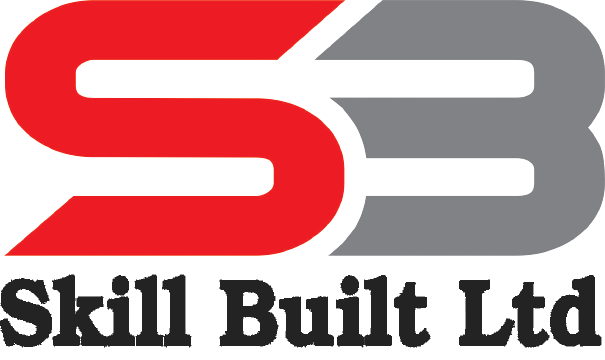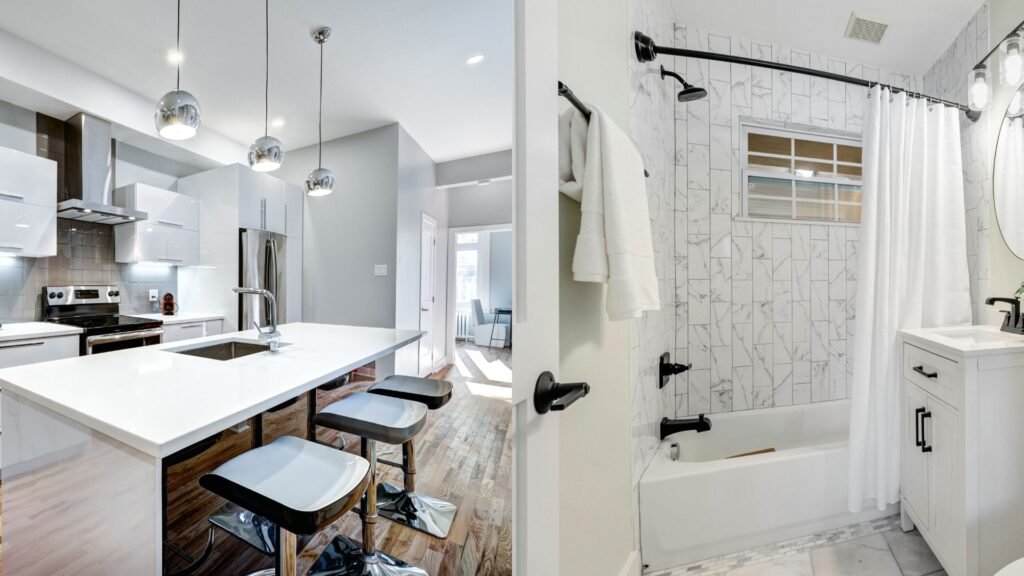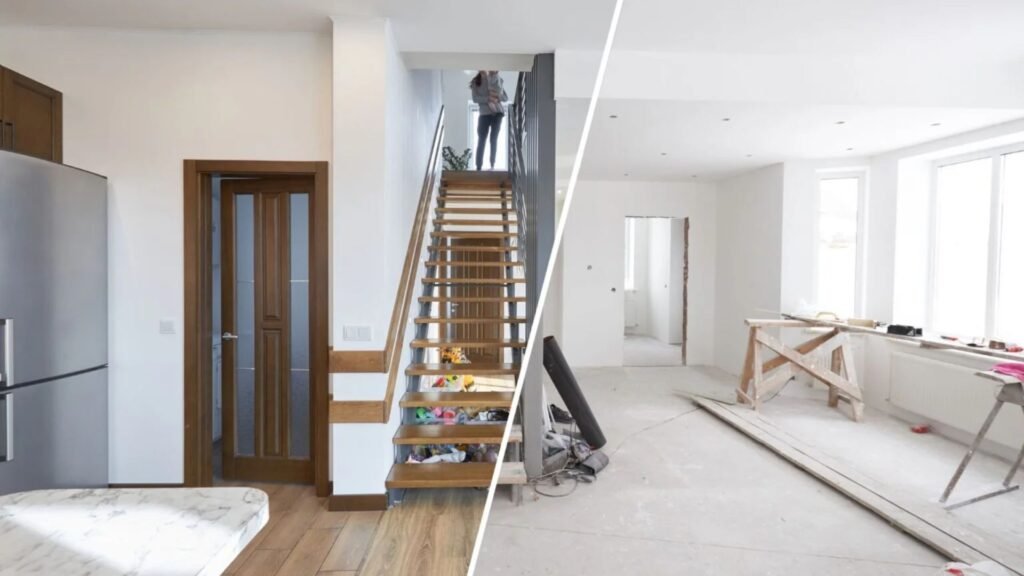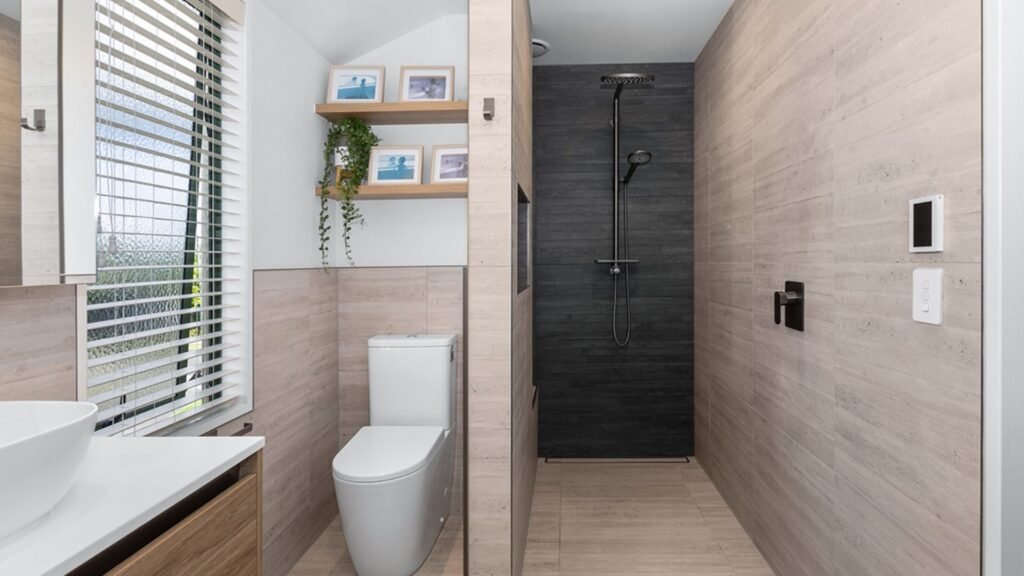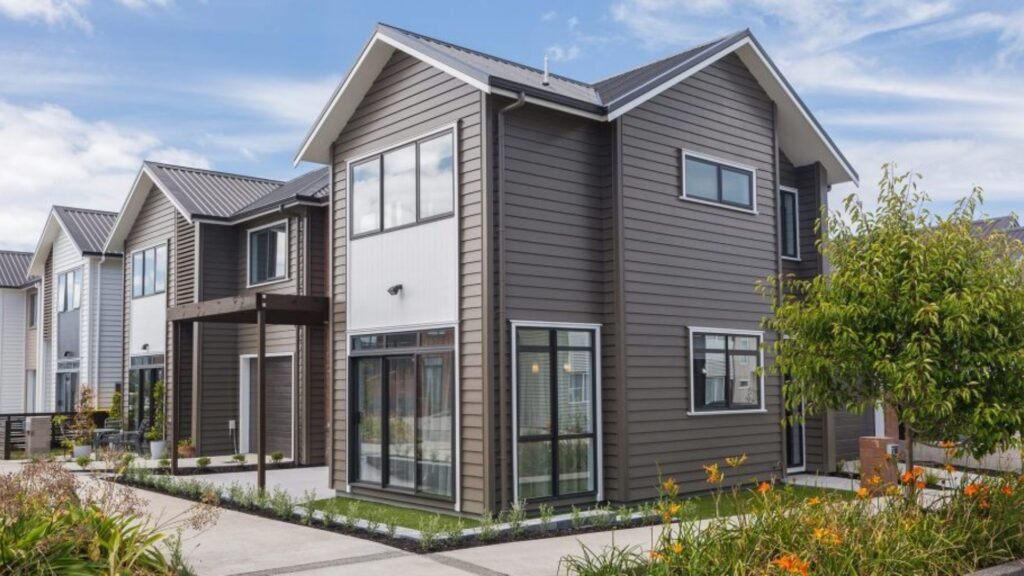Welcome to your go-to guide for making sure your builder is the real deal in New Zealand. Before you sign a contract or pay a deposit, it’s crucial to check your builder’s credentials. Hiring the wrong person can lead to delays, legal headaches, poor workmanship, or worse, unsafe structures that fail to meet building codes. Whether you’re planning a renovation, extension, or a new build, knowing how to verify a builder’s license, qualifications, and track record can save you money and stress. In this post, you’ll learn exactly what to look for, where to find it, and how to protect yourself before the first nail is hammered in.
To check a builder’s credentials in New Zealand, start by searching their name or company on the Licensed Building Practitioners (LBP) Register. Confirm they hold a valid license for the work you need. Ask for proof of insurance, request recent client references, and review past projects. Also, check online reviews and memberships with groups like Master Builders. Always verify credentials before signing a contract.
Table of Contents
What Are “Builder Credentials” In New Zealand?
Hiring the right builder can make or break your project. That’s why it’s important to know exactly what “builder credentials” mean in the New Zealand context. Credentials go beyond just experience or reputation, they involve formal licenses, qualifications, insurance, and proof of past work. Understanding these details helps you make a safe and informed decision before hiring anyone.
What Credentials Actually Mean (Licenses, Qualifications, Experience)
In New Zealand, a builder’s credentials refer to the proof that they are legally allowed, professionally trained, and experienced enough to carry out construction work. This includes:
- A valid license from the Licensed Building Practitioners (LBP) scheme
- Formal qualifications, like trade certificates or apprenticeships
- Hands-on experience with past building projects
- Reputation and client feedback to support their claims
A qualified builder should have both education and on-site experience. You want someone who not only understands the rules but has also applied them in real projects.
Key Documents And Checks: LBP License, Past Work, Insurance, References
When checking a builder’s credentials, don’t just take their word for it. Ask for specific documents that prove their legitimacy:
- LBP License: This is mandatory for restricted building work. You can verify it on the LBP Register.
- Portfolio Of Past Work: Ask to see photos or site visits of previous projects.
- Insurance Certificate: They should have public liability insurance, and possibly contract works insurance.
- References: Get at least 2-3 references from recent clients. Don’t hesitate to call them and ask detailed questions.
Checking these things may feel awkward, but trustworthy builders won’t mind. It shows you’re doing your due diligence.
The Role Of Licensed Building Practitioners (LBPs) In NZ
The LBP scheme was introduced by the New Zealand Government to ensure that only skilled professionals can carry out certain types of building work. These restricted building works include:
- Structural framing
- Foundations
- Roofing
- External cladding
- Weathertightness elements
LBPs are registered by the Ministry of Business, Innovation and Employment (MBIE) and must meet ongoing training requirements. If your project includes any restricted building work, it must either be completed or supervised by an LBP. Failing to meet this legal requirement could result in fines, insurance problems, or refusal of a Code Compliance Certificate. You can search for a builder’s LBP status at any time. It’s public and free.
Differences Between Certified, Licensed, And Unqualified Builders
These terms get thrown around a lot, but they’re not the same:
- Licensed: A builder licensed under the LBP scheme is approved to carry out restricted work. This is a legal requirement.
- Certified: This usually refers to builders who are part of a professional association, like Master Builders or Certified Builders. They may offer extra guarantees but aren’t always licensed.
- Unqualified: Anyone can call themselves a “builder” in NZ if the work isn’t restricted. But hiring someone with no formal training or license is risky.
Just because a builder is “certified” or experienced doesn’t mean they’re legally licensed. Always double-check, especially if you’re doing anything structural.
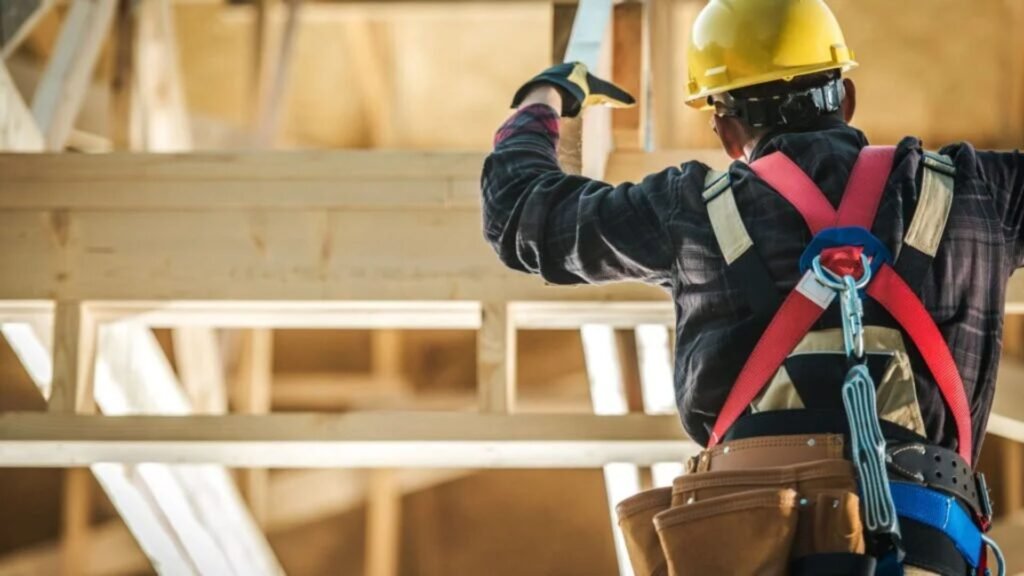
Why It’s So Important To Check Builder Credentials
Hiring a builder is a big step, whether you’re building a new home, adding a room, or doing major renovations. But before you sign any contracts, it’s critical to check their credentials. This isn’t just a formality, it’s your first line of protection against legal issues, financial stress, and poor workmanship. Here’s why checking a builder’s background in New Zealand should never be skipped.
Legal Reasons: Consent Requirements For Restricted Building Work
In New Zealand, certain types of construction require what’s called Restricted Building Work (RBW). This includes anything that affects the structure or weatherproofing of a home, like framing, foundations, or roofing. By law, only a Licensed Building Practitioner (LBP) can carry out or supervise RBW.
If you hire someone who isn’t licensed for this type of work, you could face delays in getting building consent or even have your consent application rejected. Councils will not sign off on work done by unlicensed builders for restricted projects. This can lead to rework, penalties, or having to hire someone else to fix the job.
Checking a builder’s LBP status through the official register ensures you’re meeting these legal requirements from day one.
Financial Reasons: Insurance, Warranties, And Cost Blowouts
Poorly done work can cost you thousands to fix. Worse, if your builder isn’t properly insured or licensed, your home insurance policy might not cover damages or issues that come up later.
Licensed and reputable builders are more likely to have public liability insurance and offer proper warranties for their work. These protect you from being out-of-pocket if things go wrong during or after the project.
Builders who cut corners or operate without insurance may offer lower quotes upfront, but the risks far outweigh the savings. A verified builder is an investment in avoiding surprise costs, unfinished projects, or legal disputes.
Emotional Peace Of Mind: Avoiding Cowboy Builders
Cowboy builders, those who aren’t qualified, disappear mid-job, or leave work unfinished, are still a problem across New Zealand. Many homeowners fall victim because they didn’t do a proper background check or felt pressured into making a quick decision. When you check credentials, you gain peace of mind. You know you’re hiring someone who meets government standards, follows the rules, and has experience. It makes your entire building process less stressful, and you can focus on the exciting parts of the project instead of worrying about what might go wrong.
Real-Life Example: When A Bad Hire Costs More Than Money
Take this example from Auckland: a couple hired a builder they found online with no LBP license, no client references, and no written contract. The project started well, but halfway through, the builder vanished, with a large deposit and half the work unfinished.
The couple had to start over with a new LBP, pay extra to fix what was done incorrectly, and deal with weeks of stress and delays. Because the first builder wasn’t licensed or insured, they had no legal protection and couldn’t recover their money easily. This could have been avoided with a simple check of the LBP register and a few calls to past clients.
Verifying builder credentials is more than a checkbox, it’s about protecting your home, your wallet, and your peace of mind. Never assume a builder is qualified just because they say so. Take the time to check, and you’ll avoid the traps that catch too many Kiwi homeowners.
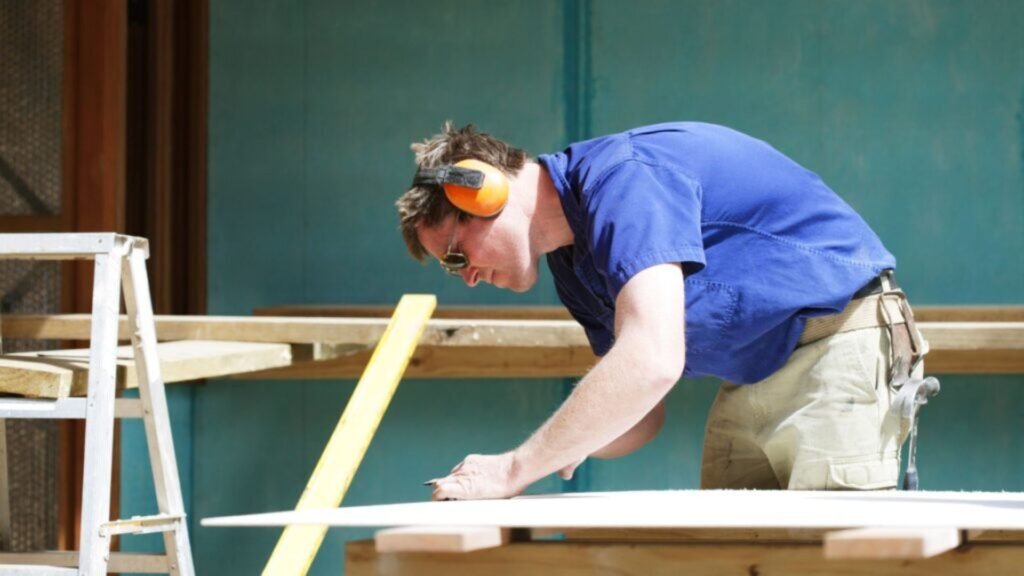
Where To Start: The Official LBP Register
When you’re hiring a builder in New Zealand, the first place you should check is the Licensed Building Practitioners (LBP) Register. It’s a free, government-managed database that tells you whether a builder is officially licensed to carry out restricted building work.
This step isn’t just a formality. It protects you from hiring someone who lacks the legal qualifications to handle critical parts of your construction or renovation. If your project involves structural changes, roofing, or weathertightness, the law requires that an LBP carries out or supervises that work.
What The LBP Register Is And How It Works
The LBP Register is maintained by New Zealand’s Ministry of Business, Innovation and Employment (MBIE). It lists all active and inactive LBPs, along with their license status, license class (such as carpentry or roofing), and any disciplinary actions.
Builders must renew their license regularly and meet certain criteria to keep it active. If they fail to follow the LBP rules, they may be suspended or removed. That’s why the register is the most reliable way to verify a builder’s credentials.
Step-By-Step Guide To Using The Licensed Building Practitioners Register
You don’t need any special access or login to use the register. Just follow these steps:
1. Go to the Licensed Building Practitioners Register
2. Click on “search the public register”
3. Enter the builder’s full name or LBP number
4. Click “search”
You’ll then see the builder’s public profile. It will show:
- Full name
- LBP number
- License class (e.g., Carpentry, Roofing)
- License status (active, suspended, expired)
- Any disciplinary notes or past complaints
Take a few minutes to check each detail, especially the license class. Not all LBPs can perform all types of building work.
What You’ll Find There: License Class, Status, Suspension Info
Each builder will be tagged with specific license classes. For example:
- Carpentry: building frames, floors, roofs
- Roofing: installing roof cladding
- Bricklaying and Blocklaying: working with concrete blocks and bricks
- External Plastering: applying render or other protective layers
- Foundations: laying and reinforcing foundation systems
You’ll also see the license status, which will either be:
- Active: license is current
- Suspended: the builder has been temporarily restricted from working
- Expired: the license hasn’t been renewed
- Cancelled: the license has been revoked permanently
This information helps you avoid working with someone who may not legally be allowed to take on your project.
What To Do If A Builder Isn’t Listed
If you search the register and your builder doesn’t appear, don’t ignore it.
Here’s what to do:
- Double-check the spelling of their name or ask for their LBP number
- Ask them directly why they’re not on the register
- Request proof of any other qualifications or memberships
- Avoid hiring them for restricted building work unless they can prove they’re licensed
If the builder avoids the question or gives vague answers, consider it a red flag. You don’t want to take chances with something as serious, and costly, as construction.
- Always remember: a licensed builder won’t mind being checked. In fact, the good ones will encourage you to do it.
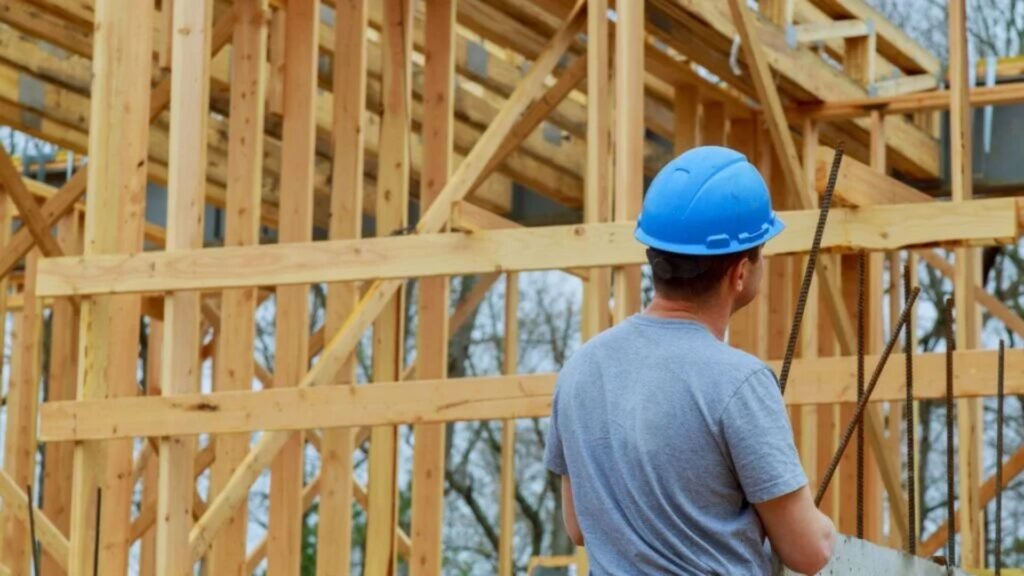
Other Ways To Check A Builder’s Credentials
Even if a builder appears trustworthy at first glance, it’s still smart to do your own due diligence. Beyond checking the LBP Register, there are several practical and reliable ways to confirm a builder’s experience and reputation. These steps can help you avoid surprises and give you more confidence before signing a contract.
Ask For Qualifications And Licenses Directly
Don’t be afraid to ask for proof. A professional builder won’t hesitate to show their license, certificates, or qualifications. You can request to see their Licensed Building Practitioner (LBP) card or any trade-specific certifications. If they’re a member of an association like Master Builders or Certified Builders, ask for confirmation of that too. A qualified builder will always be transparent about their background.
Review Past Work Or Request A Portfolio
A quality builder should be proud of their previous projects. Ask to see photos, videos, or even visit completed worksites if possible. Look for consistency in craftsmanship, attention to detail, and types of projects completed. This gives you a clear picture of what they’re capable of and whether their style matches what you’re looking for. If the builder has a website, browse their gallery or case studies.
Request Client References, And What Questions To Ask
References offer first-hand insight that no website or brochure can match. Ask the builder for at least two to three recent clients you can contact. When speaking with those clients, ask questions like:
- Was the project finished on time and within budget?
- How did the builder handle changes or setbacks?
- Was communication clear and consistent?
- Would you work with this builder again?
These questions help you go beyond the surface and get a feel for how the builder handles real-world situations.
Search For Reviews Online (Google, Trade Me, BuildersCrack)
Online reviews aren’t everything, but they do add another layer of insight. Start with Google Reviews and check platforms like BuildersCrack and TradeMe Services. Look for trends, if multiple people mention delays, poor communication, or poor workmanship, that’s a red flag. On the other hand, consistent positive feedback shows the builder likely delivers good results.
Use Building Consent Authority Or Council Records To Check Compliance History
Your local council can be a valuable resource. Ask if the builder has had any failed inspections, delays due to non-compliance, or disputes during previous projects. Councils keep records of building consents, which may show if the builder has a history of following the rules or cutting corners. You can also verify whether previous projects required rework due to poor quality or non-compliant work. Taking these extra steps might take a little more time, but they’re worth it. You’re not just hiring someone to build, you’re trusting them with your home, time, and money. Always verify before you commit.
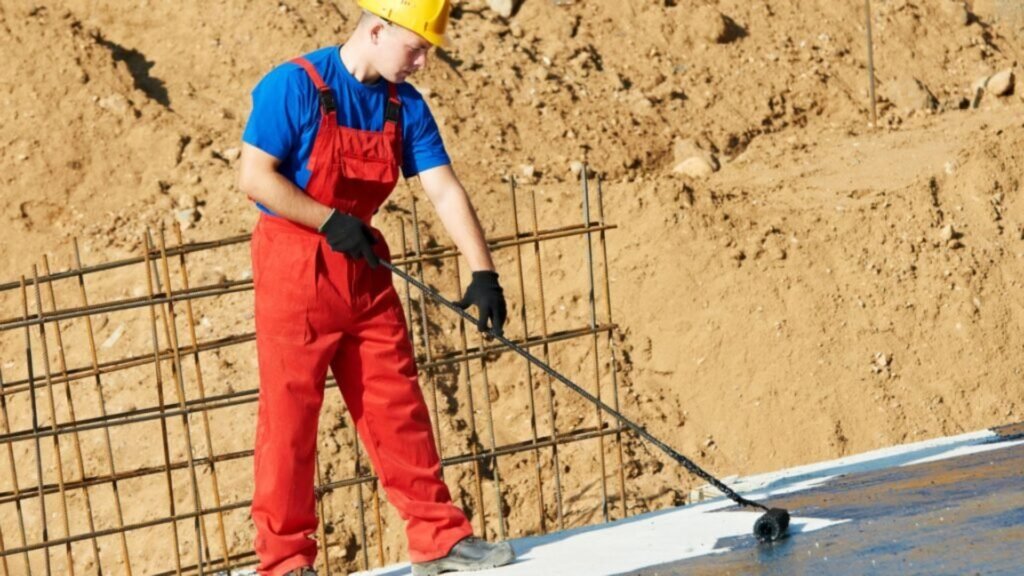
Red Flags To Watch Out For
Hiring a builder is a major decision. You’re trusting someone with your home, your budget, and your peace of mind. That’s why it’s important to spot red flags before signing anything. These warning signs can help you avoid costly mistakes and protect yourself from poor workmanship or dishonest practices.
Vague Answers Or Missing Documentation
If a builder can’t give straight answers about their license, past projects, or experience, treat it as a red flag. Honest, experienced builders should be able to show their LBP license, portfolio, or even a list of recent jobs. When someone dodges these questions or promises to “send it later,” that’s a sign to be cautious. Transparency builds trust, if they can’t show proof up front, what will happen once the work begins?
Reluctance To Provide References
A reliable builder will gladly give you the names and contact details of past clients. They understand the value of a good reputation. If someone refuses or keeps making excuses like “my clients don’t like being contacted,” ask yourself why. It could mean they’re hiding poor reviews or haven’t completed many successful projects. Talking to at least two past clients can help you understand the builder’s professionalism, communication, and workmanship.
Pressure To Start Quickly Or Pay Cash
High-pressure tactics should always raise concern. If a builder pushes you to skip due diligence and “start now to lock in a deal,” take a step back. They may be trying to rush you before you notice issues. The same goes for requests to pay large amounts in cash. While small jobs sometimes involve cash, larger projects should be backed by bank records, invoices, and clear documentation. Cash deals can leave you unprotected if something goes wrong.
No Written Contract Offered
Never start a building project without a written agreement. Verbal promises aren’t enough. A written contract protects both you and the builder. It should outline the scope of work, costs, payment schedule, deadlines, materials, and warranties. If the builder avoids giving you a contract or insists that “we don’t need one,” walk away. No contract means no accountability if disputes arise.
Incomplete Or Unverifiable LBP Details
Licensed Building Practitioners (LBPs) are required for certain building work in New Zealand. If your builder claims to be licensed, verify it on the LBP Register. Incomplete names, expired licenses, or unverifiable license numbers are red flags. A trustworthy builder will give you accurate, up-to-date details so you can check them for yourself. If anything doesn’t match or they can’t prove it, find someone else.
Staying alert to these red flags can save you time, money, and stress. Always take your time before hiring. Ask questions, double-check credentials, and trust your instincts. A good builder will respect your diligence and support you every step of the way.
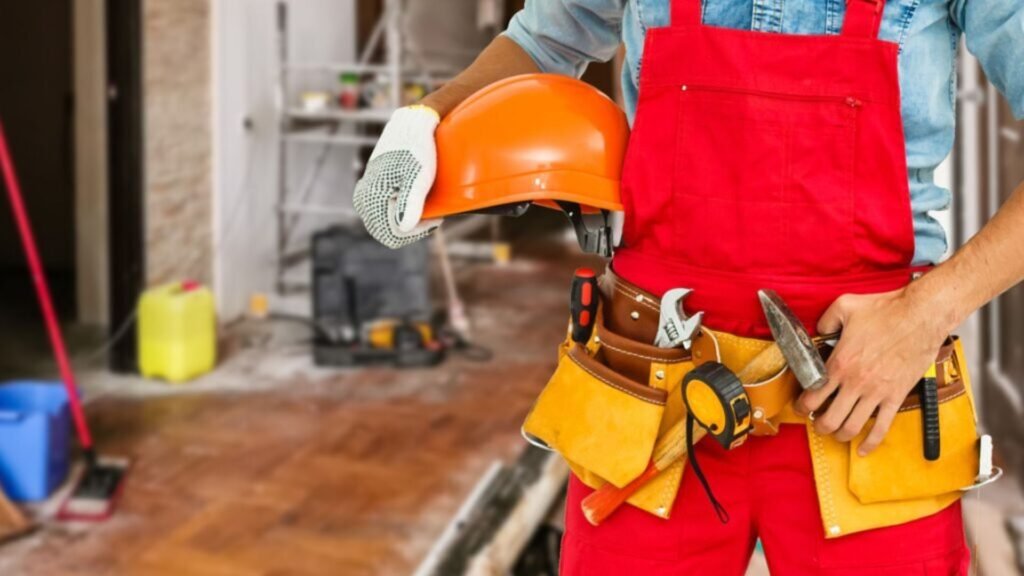
Do You Always Need An LBP?
Choosing the right person for your building project in New Zealand starts with knowing whether you need a Licensed Building Practitioner (LBP). Many homeowners assume they always do, but that’s not the case for every job. Still, there are key situations where an LBP is legally required, and times when a general builder or handyman might be enough. Even if it’s not a legal requirement, checking someone’s qualifications can help you avoid costly mistakes, delays, or unsafe work.
When LBP Is Required (Restricted Building Work Like Structural Or Weathertightness Work)
In New Zealand, Restricted Building Work (RBW) is a legal category that covers critical elements of a residential building. This includes anything that affects the building’s structure or weatherproofing. If your project involves things like framing, foundations, roofing, or external cladding, it falls under RBW. Only a licensed builder (LBP) can carry out or supervise this kind of work.
Here are common examples where you’ll need an LBP:
- Building a new home
- Adding a new room or floor
- Replacing or altering structural framing
- Installing or repairing weathertight cladding or roofing
- Major renovations that impact the load-bearing structure
If you hire someone who isn’t licensed to do restricted work, your local council may reject your building consent. Even worse, your insurance could be void, and you may be held responsible for future compliance issues.
When A General Builder Or Handyman May Be Enough
Not every job needs an LBP. If you’re doing basic home improvements that don’t involve structure or weatherproofing, a skilled general builder or even a handyman could be fine. These types of tasks include:
- Installing a new kitchen (without moving walls)
- Painting, flooring, or tiling
- Hanging doors or fitting shelves
- Installing fencing or decks (under a certain height)
That said, always check the scope of the work against council guidelines. Some jobs start off small but may require consent or licensed work if they impact the building’s structure, insulation, or moisture barrier.
Why You Should Still Check Qualifications Even When Not Legally Required
Just because you’re not legally required to hire an LBP doesn’t mean you should skip due diligence. Even for minor jobs, the quality of the builder’s skills and experience makes a big difference. A poorly done bathroom or incorrectly installed deck can cost thousands to fix later.
Here’s why you should check credentials even for simple jobs:
- It shows the builder takes their work seriously
- You can verify past projects, reviews, or client references
- You reduce the risk of safety issues or poor workmanship
- You know what to expect in terms of timelines, quality, and cost
Ask for photos of similar work they’ve done. Request a written quote and clear project timeline. If they’re part of a professional group like Master Builders or Certified Builders, that’s a good sign too, even if it’s not required by law.
Always match the skill level of your builder to the scope of your project. Legal rules are just the starting point. Your goal should be to hire someone who’s both qualified and reliable, no matter how big or small the job is.
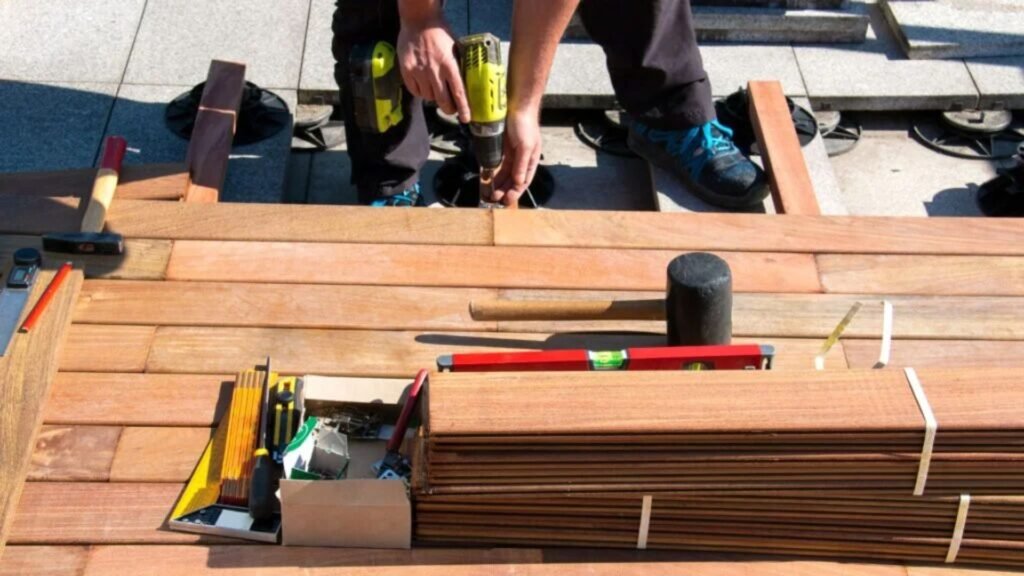
How To Verify Insurance And Warranties
Hiring a builder is a big step, and verifying their insurance and warranties is one of the smartest things you can do before signing any agreement. It protects you from unexpected costs, delays, and legal issues if something goes wrong on-site. Many homeowners assume that all builders are insured or offer warranties by default, but that’s not always the case. Below is a breakdown of what you need to check, what each type of protection means, and what to do if your builder comes up short.
Public Liability Insurance: What It Covers
Public liability insurance protects both you and the builder if someone is injured or property is damaged during the building process. For example, if a visitor trips over materials or your neighbour’s fence is damaged during construction, this insurance covers the cost of claims, repairs, or legal action. Without it, you could be financially responsible, even though the builder caused the issue.
Always ask for a copy of the builder’s insurance certificate. Check:
- That it is active and not expired
- The amount of cover (usually recommended: $1–5 million)
- The name matches the builder or company you’re hiring
If your builder hesitates or refuses to provide this, that’s a red flag. A trustworthy builder will be happy to prove they’re covered.
Contracts And Warranties: What To Expect
A clear, written contract is non-negotiable. It should include project timelines, payment terms, dispute resolution processes, and warranty details. Never rely on verbal agreements or handwritten notes.
Warranties are your safety net if something goes wrong after the work is done. They cover things like:
- Defects in workmanship or materials
- Structural issues
- Water tightness (especially important in NZ’s climate)
Most reputable builders offer a 12-month or longer warranty, often backed by third parties like Master Build or Certified Builders guarantees. Ask exactly what’s covered, for how long, and what the claims process looks like.
The Role Of Master Builders Or Certified Builders Memberships
Builders who belong to trade organizations like Master Builders or Certified Builders are held to higher standards and must meet strict membership criteria. These groups often offer additional protections like:
- Longer warranties (up to 10 years in some cases)
- Access to dispute resolution services
- Assurance that your builder meets experience and skill requirements
While not mandatory, membership is a strong sign of professionalism. You can confirm a builder’s membership by visiting the Master Builders or Certified Builders website and searching their name.
What To Do If The Builder Is Uninsured
If the builder you’re considering doesn’t have insurance, step away. No insurance means you’re exposed to risk, financially and legally. If they try to reassure you with “nothing has ever gone wrong,” that’s not good enough. Accidents happen even on the safest sites.
Your options:
- Ask if they’re willing to obtain insurance before the project begins
- Choose a different builder who is already covered
- Discuss insurance needs with your own home insurer to cover gaps, but don’t rely solely on that
Never take a chance on an uninsured builder. It’s not worth the risk, especially for large or structural projects. By taking the time to verify your builder’s insurance and warranties, you protect yourself from stress, cost, and potential legal battles. Always ask questions, request documentation, and don’t settle for vague answers. A professional builder will respect your due diligence, it shows you’re serious about doing things right.
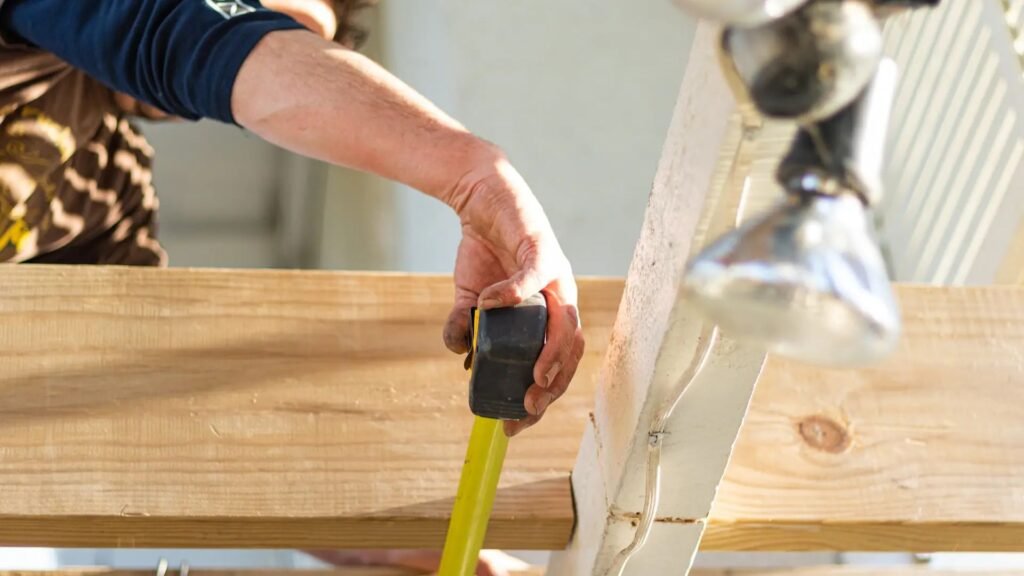
Helpful Tools And Resources
When you’re hiring a builder in New Zealand, having the right tools and resources can make the process much easier and safer. You don’t need to be a building expert to protect yourself, you just need to know where to look and what to ask. Below are trusted tools and links that anyone can use to check credentials, verify reputations, and make confident decisions before starting any building project.
Government And Council Links (MBIE, LBP Register, Local Council Pages)
The Ministry Of Business, Innovation And Employment (MBIE) provides helpful building guides, licensing information, and official updates for homeowners and builders. One of the most useful tools is the Licensed Building Practitioners (LBP) Register, where you can search by name or number to confirm if a builder is licensed, what type of license they hold, and whether it’s active.
Your local council’s website is another important resource. Councils issue building consents and can provide building compliance records for past work done by a builder. This is helpful if you want to check the builder’s history with permits, inspections, or any past issues flagged during projects.
Consumer NZ And BuildersCrack For Checking Reputations
Consumer NZ is an independent organization that reviews services and products in New Zealand. They often provide useful reports and advice about hiring tradespeople, dealing with disputes, and understanding your rights as a homeowner.
BuildersCrack is a platform where you can post your job and get quotes from rated builders. You can read real reviews from previous clients, see how many jobs a builder has completed, and check their response times and reliability. While you shouldn’t rely on online reviews alone, this tool gives you an early feel for a builder’s reputation.
Sample Checklist To Follow When Vetting Builders
Using a checklist keeps you on track and ensures you don’t miss any important questions during the hiring process. Here’s what a good builder-vetting checklist should include:
- Is the builder listed on the LBP Register?
- Do they have current public liability insurance?
- Can they show photos or details of past projects?
- Are they willing to provide written references?
- Do they offer a clear, written contract?
- Are timelines and payment schedules defined?
- Have they worked on projects similar to yours?
You can create your own checklist or download templates from sites like MBIE or Consumer NZ. Keeping it handy during calls or meetings makes decision-making more confident and structured.
Suggested Template Questions For References
When a builder gives you references, don’t just ask if the client was “happy.” Go deeper with specific questions that reveal how the builder handles pressure, communication, and project details. Here are a few to ask:
- What type of project did the builder complete for you?
- Was the work finished on time and within budget?
- Were there any unexpected issues, and how were they handled?
- How was communication during the project?
- Would you hire this builder again?
These questions help you move beyond surface-level feedback and spot patterns that show whether a builder is trustworthy and competent.
This section is designed to give everyday homeowners tools they can actually use. It keeps the process transparent and makes sure you’re not walking into an expensive mistake. A little research upfront using these resources can save you time, stress, and thousands of dollars.
Still unsure where to begin? We help you find licensed builders, check their credentials, and make informed decisions. Head to our homepage and get started today.
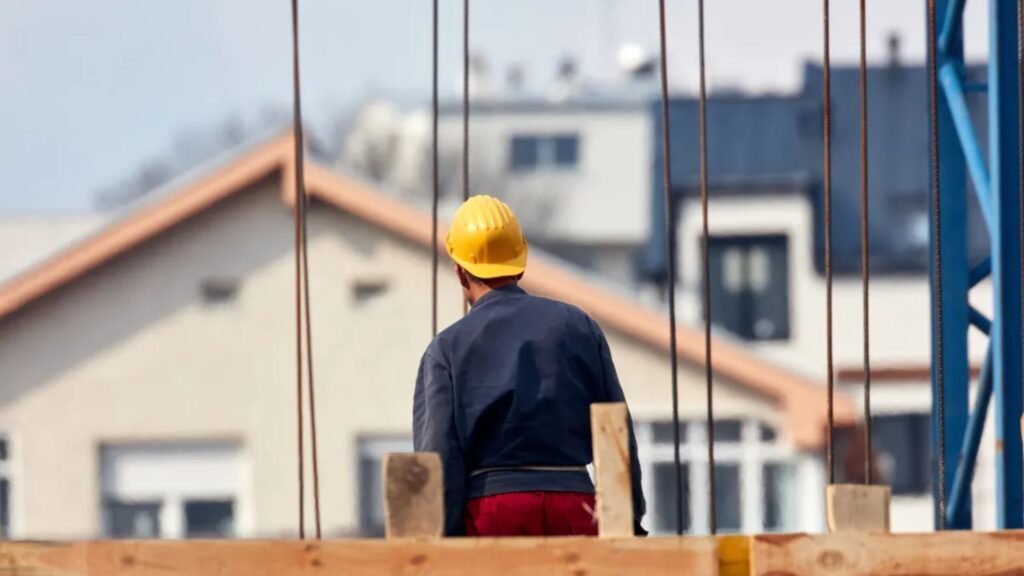
FAQs: About How To Check A Builder’s Credentials In NZ
What is the LBP Register and why is it important?
The LBP (Licensed Building Practitioners) Register is an official government database in New Zealand that lists builders licensed to carry out or supervise restricted building work. It shows details like license type, status, and whether it’s current. Checking the register helps confirm your builder is legally qualified for the work.
How do I find out if a builder is licensed in NZ?
Visit the Licensed Building Practitioners Register. Enter the builder’s full name or license number. Review their license status, class (e.g., carpentry), and any disciplinary history. Always verify this before signing a contract.
Do all builders in NZ need to be licensed?
Not all builders need to be licensed. A license is only required for “restricted building work,” which includes structural or weathertight elements of residential homes. For general jobs or cosmetic work, licensing may not be required, but checking their experience and references is still essential.
What are some red flags when hiring a builder?
Watch for builders who avoid giving written contracts, ask for large upfront payments, refuse to provide credentials or references, or pressure you to make fast decisions. Poor communication and vague pricing can also be warning signs.
Can I trust online reviews when choosing a builder?
Online reviews can help, but they shouldn’t be your only source. Look for consistent feedback across platforms like BuildersCrack, Google Reviews, or TradeMe. Ask for direct references from previous clients to get a fuller picture of their reliability and work quality.
Should I hire a builder who isn’t on the LBP Register?
Only if the work is minor and doesn’t involve restricted building tasks. For anything structural, weatherproofing-related, or major renovations, hiring an LBP is legally required. Hiring unlicensed builders for such work may affect consent approval and insurance coverage.
What’s the difference between a Licensed Building Practitioner and a Master Builder?
An LBP is licensed by the government, while a Master Builder is a member of a professional association. Master Builders often offer additional guarantees and follow a strict code of conduct. Ideally, choose a builder who is both an LBP and a Master Builder for added assurance.
Can I report a builder for providing false credentials?
Yes. If a builder misrepresents their license status or qualifications, you can report them to the Building Practitioners Board or your local council. This helps protect others and may trigger disciplinary action or license suspension.
What questions should I ask a builder’s references?
Ask if the project was finished on time and within budget, whether the builder communicated clearly, how issues were handled, and if they’d hire the builder again. Focus on both the end result and the overall working experience.
Is builder insurance necessary, and how do I verify it?
Yes, always confirm that your builder has public liability insurance and, ideally, contract works insurance. Ask for a copy of their insurance certificate and verify the coverage details with the insurer if needed. Insurance protects you from unexpected costs or damage during the project.
Conclusion
Before you commit to any builder, take a moment to slow down and double-check everything. Always check their license status, ask detailed questions, and confirm references or past projects. Don’t let anyone pressure you into a quick decision, take your time to compare quotes, meet with multiple builders, and get a feel for how each one communicates. Even if a builder seems trustworthy, never rely on verbal promises alone. Make sure every detail, costs, timelines, materials, and responsibilities, is clearly written in the contract. This protects both sides and avoids disputes later. Finally, bring a checklist with you when meeting builders so you can stay focused, organized, and confident in your decision-making. It’s better to ask too many questions now than to deal with regrets after work begins.
